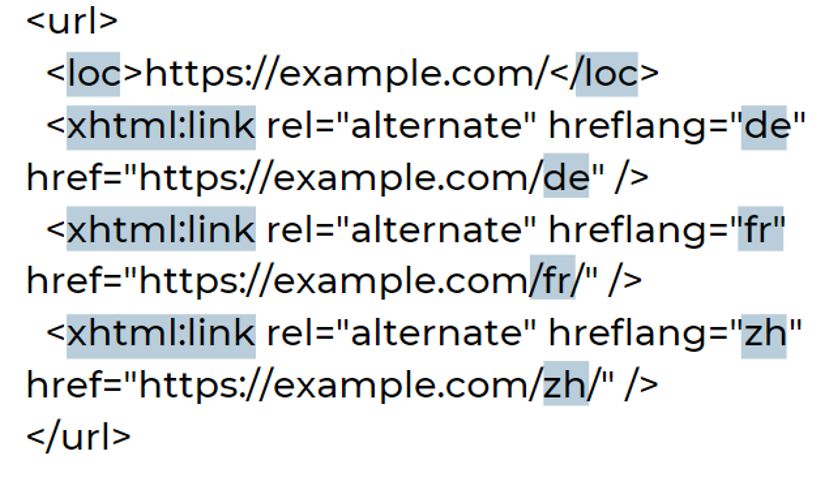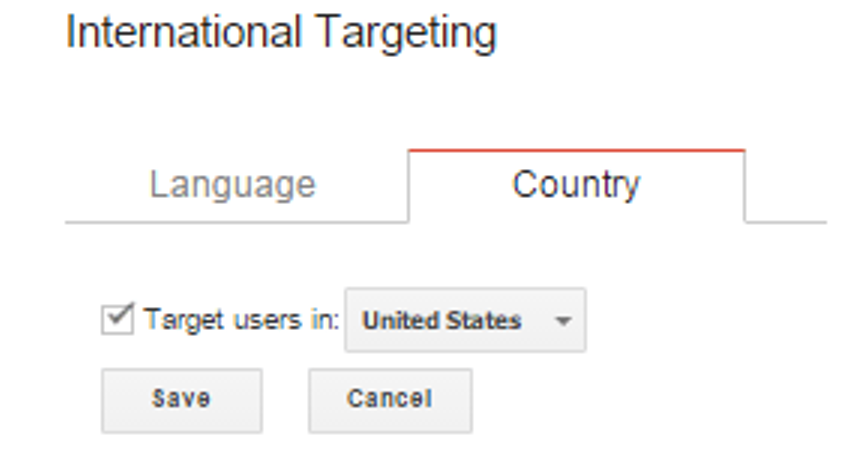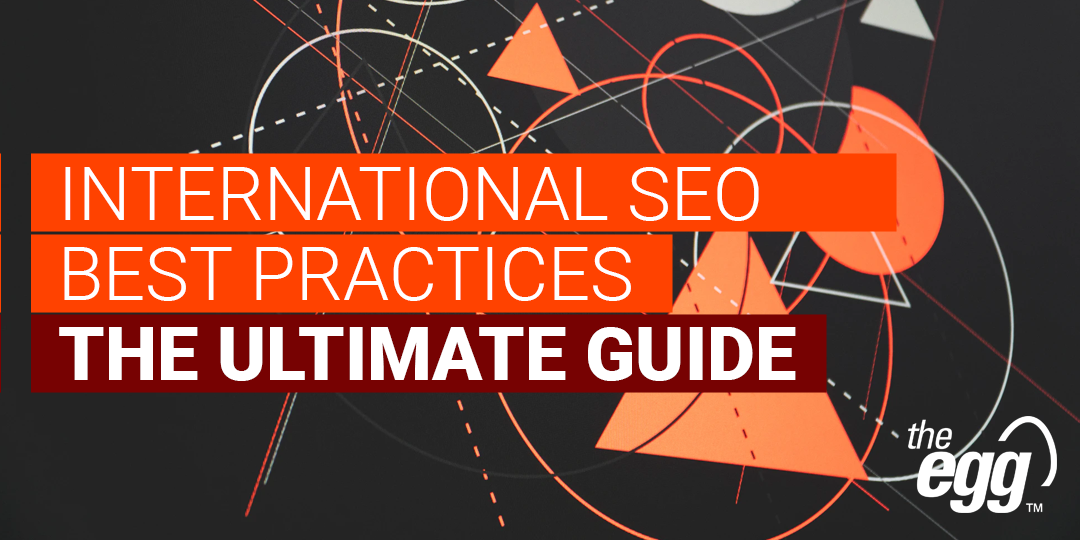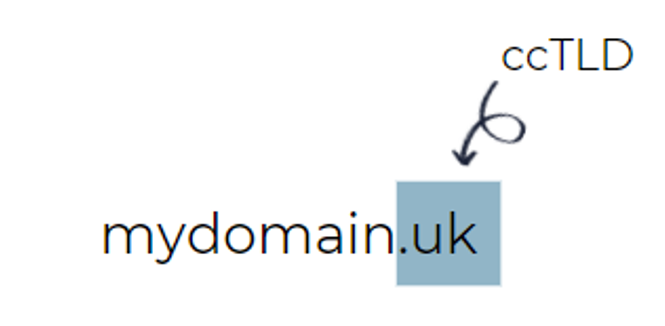INTERNATIONAL SEO BEST PRACTICES: THE ULTIMATE GUIDE 2024
Are you marketing your products and services internationally? If so, a strong international SEO strategy will help potential customers find you on the top search engines in their particular region.
What is International SEO? Why is it important? And what are the best practices? Navigating the landscape of International SEO can often feel like exploring uncharted territory. However, there’s no need for alarm. This article aims to demystify the intricate world of international SEO, guiding you through its nuanced considerations and equipping you with best practices to effectively connect with and convert an international audience.
WHAT IS INTERNATIONAL SEO?
International search engine optimization (SEO) is the process of improving your website’s searchability for users who live in different countries and/or speak different languages.
International SEO can be broken down into 2 subsets:
- Multiregional SEO (Country-Based Targeting)
- Multiregional SEO means optimizing your website content for different regions. For example, this may mean targeting users in Canada, France, and Italy using English, ensuring that your strategies meet the true search intent for each of those diverse markets.
- Multilingual SEO (Language-Based Targeting)
- Multilingual SEO means localizing your website content for a variety of languages. For example, this may mean targeting users in Singapore using Simplified Chinese and English.
By implementing international SEO—whether multiregional, multilingual, or both!—on your website, you essentially bridge the gap between your business and visitors—no matter where they are in the world.
The benefit of international SEO is clear: Imagine a French user searching for your products or services in Korea, for instance. He or she would be directed to the correct version of your website—i.e., the content for the Korean market (the right products, time zone, currency, etc.) but all in French language.
This would create a better user experience and, in turn, greater click-through rates and ultimately conversions.
WHY IS INTERNATIONAL SEO IMPORTANT?
Investing in international SEO has several benefits for businesses that go global. Here are some of them:
Expanded Global Reach
International SEO allows businesses to connect with new markets across the globe. As it involves optimizing content for different languages and regions, it makes a website more accessible and appealing to diverse audiences. As a result, investing in international SEO not only broadens the potential customer base but also enhances brand presence internationally, leading to increased traffic and potential revenue growth.
Enhanced User Experience
Tailoring a website to cater to the preferences and languages of different regions dramatically improves user experience. International SEO involves localizing content, adjusting design elements, and ensuring cultural relevance, which makes visitors feel valued and understood. This personalization will foster trust and loyalty, encouraging higher engagement rates and return visits.
Competitive Advantage
Implementing international SEO puts a website ahead of competitors who may not be optimized for various global markets. By appealing directly to international audiences and meeting their specific needs more effectively, a business can differentiate itself and carve out a unique position in the global marketplace. This strategic advantage leads to stronger brand recognition and potentially higher market share in target regions.
DO YOU NEED INTERNATIONAL SEO?
The answer is (drum roll, please): Yes! If a significant portion of your website visitors are multiregional and/or speak different languages, it is a strong signal for you to optimize your website for international audiences.
This also applies if you are expanding your local business into overseas markets: You will need to implement effective international SEO best practices to reach potential customers around the world.
And although virtually every best practice for a local SEO campaign applies to an international SEO campaign, the biggest difference is localizing your website’s content across multiple regions and ensuring a few additional technical SEO aspects are in check.
Here are the international SEO best practices to follow for success:
INTERNATIONAL SEO BEST PRACTICES
#1 DOMAIN NAME STRATEGY
A domain name strategy refers to the URL structure of your international or multiregional website(s). This strategy will have a huge impact on your organic rankings, geo-targeting, and domain authority, so it’s critical to get it right.
There are 4 primary types of URL structures for international SEO, each with their own pros and cons:
- Country-code top-level domains (ccTLDs)
- Subdomains
- Subdirectories/subfolders
- Generic top-level domains (gTLD) with URL parameters
COUNTRY-CODE TOP-LEVEL DOMAIN (ccTLDs)
Example of a ccTLD targeting users in the UK
ccTLDs align with ISO 3166-1 alpha-2 country codes to indicate in which country the website is registered. For example, .uk represents the United Kingdom and .au represents Australia.
When you apply a ccTLD to your site, search engines like Google will assume that all the content on the site is specifically relevant to that particular region and will therefore feature it on their search engine results pages (SERPs) for that region.
PROS OF ccTLDs
- ccTLDs send strong geo-targeting signals to search engines.
- ccTLDs improve your site’s click-through rate (CTR) due to higher locational relevancy.
- ccTLDs are essential for websites targeting countries that are more centralized like China, where the #1 search engine—Baidu—only shows Chinese ccTLDs (.cn) on its SERPs.
CONS OF ccTLDs
- ccTLDs incur higher domain registration costs. For example, if you want to target 32 regions, you must purchase 32 different ccTLD domains and hosting plans for each.
- ccTLDs require more time, resources, and effort to maintain.
- SEO efforts done on one ccTLD will not benefit other ccTLDs, as search engines view each ccTLD as a separate entity.
SUBDOMAINS
Example of a website subdomain targeting users in France
Subdomains include the country code before the domain name.
By using a subdomain, you can create a distinct subset of your website populated with localized content—without creating an entirely new website.
However, subdomains are generally not the preferred URL structure type as their cons outweigh their pros:
PROS OF SUBDOMAINS
- Subdomains are easy to implement via content management systems (CMS).
- Since no additional domain or hosting is required, registration costs for subdomains are more affordable than ccTLDs.
- Subdomains inherit some link equity from the root domain—though the extent is still widely debated in the SEO community.
CONS OF SUBDOMAINS
- Compared to ccTLDs, subdomains send weaker geo-targeting signals since search engines do not automatically associate subdomains with a country or region.
- Some users may not immediately recognize that a subdomain is targeted at them, thereby resulting in fewer clicks.
- Hreflang tag implementation can be challenging on subdomains.
SUBDIRECTORIES/SUBFOLDERS

Subdirectories or subfolders utilize language or country codes that can be inserted at the end of the domain after a forward slash—i.e., .com/au. For this domain name strategy to work, your website requires a generic top-level domain (gTLD), such as “.com”, “.org”, “.net” or “.edu”.
Subfolders are also widely accepted as the most effective and straightforward way to organize information on your website for international visitors.
PROS OF SUBDIRECTORIES / SUBFOLDERS
- Since they share the same domain, SEO efforts done on one subfolder are all-inclusive and will benefit all other subfolders.
- Subfolders are the easiest to implement—it is as simple as creating another landing page on your website.
- Subfolders can be effective for both language- and country-targeting. For example, “mydomain.com/en-sg” clearly indicates that the page is for English-speaking users in Singapore.
- Subdirectories or subfolders are cost-effective for international SEO since they do not require additional domains or hosting.
CONS OF SUBDIRECTORIES / SUBFOLDERS
- Compared to ccTLDs, subdirectories generate weaker geo-targeting signals to search engines, as there is no country-specific authority to the website.
- Some users may not instantly recognize that the subfolder is targeted at them, which can result in fewer clicks.
- Hreflang tag implementation can be challenging, particularly on some CMS.
gTLD WITH URL PARAMETERS

Also known as query strings or URL variables, URL parameters refer to the set of characters after a question mark (?), ampersand (&), equals sign (=) or other attributes in a URL.
However, we don’t recommend this domain strategy as URL parameters are often ignored by search engines.
PROS OF gTLD WITH URL PARAMETERS
- gTLDs with URL parameters are easy to implement.
- gTLDs with URL parameters inherit link equity from the root domain.
CONS OF gTLD WITH URL PARAMETERS
- URL parameters create duplicated website content, which can lead to internal cannibalization.
- Compared to ccTLDs, URL parameters generate weaker geo-targeting signals to search engines, as there is no country-specific authority to the website.
- Google does not recommend URL parameters, so implementing them may prove futile.
Google sums up this point perfectly:
Overly complex URLs, especially those containing multiple parameters, can cause problems for crawlers by creating unnecessarily high numbers of URLs that point to identical or similar content on your site. As a result, Googlebot may consume much more bandwidth than necessary or may be unable to completely index all the content on your site.
Google’s documentation on URL parameters
After evaluating the pros and cons of each domain name strategy, you can see that there is no one strategy that is optimal for all circumstances.
Instead, you should consider your business’ budget, time constraints, CMS limitations, and technical support when selecting the domain name strategy that’s best for you.
#2 LANGUAGE TARGETING
HREFLANG TAGS
Hreflang is an HTML language attribute that tells search engines which language or country a particular page is targeting.
You can think of hreflang tags in this way: When users in Japan search for your site in Japanese language, for example, the hreflang tag ensures that they see it in Japanese only—not in Korean or any other language.

The hreflang tag above tells search engines that this is an English page that should feature on SERPs in the United States.

And here, the hreflang tag signals to search engines that this is a German page that should feature on SERPs in Australia.
HOW TO IMPLEMENT HREFLANG TAGS
There are 3 ways to implement hreflang tags:
HTML link element in <head> section
Add a link element to the HTML <head> section to direct search engines towards a specific language or country.
For example, if your page is for Spanish-speaking users in the United Kingdom, you should include this string of code within the <head> section of the page:

HTTP headers
If you have PDFs or non-HTML content, you can use HTTP headers to implement an hreflang tag.
For example, if you are translating a PDF from Spanish to English and German, you would add this string of code into the HTTP header of the file:

XML sitemap
The third option uses the xhtml:link attribute to annotate URLs in the XML sitemap.
With this method, each URL in the XML sitemap has a self-referencing hreflang attribute and return links to other URLs.
Here, the <loc> elements indicate the page’s URL. For example, if you are translating a page from English to German, French, and Chinese, you would add this string of code into your XML sitemap:

For more information, you can also check out Google’s documentation on hreflang tags.
THE HREF X-DEFAULT TAG
The x-default tag is used when no other language or region matches the user’s browser settings. Although this is an optional value to include, it is great way to control which pages show up when no languages or regions match. In a link element, it will look like this:

#3 DEFINE GEO-TARGETING IN GOOGLE SEARCH CONSOLE
In addition to the hreflang tag, you can define your language or country preferences in Google’s International Targeting Report.
In this report, there are 2 tabs that will help you monitor and identify errors relating to your hreflang tags:

Language tab
This tab helps monitor the usage and errors of up to 1,000 hreflang tags on your site.
Country tab
This tab lets you set a country for your entire site to target. Do note that this setting only applies to geographic data.
For example, if you sell products and services within France only, then you would setup your site’s country target as “France”.
Alternatively, if you have a French website that you want users in Germany, Denmark, and Singapore to visit, you would not use this country-targeting tool.
#4 LOCALIZED CONTENT & KEYWORD STRATEGY
Before expanding to other countries, you must understand which keywords diverse regional audiences use to search as this varies drastically across different regional markets. This will allow you to understand and match true search intent and behavior based on the search volume of particular keywords in a particular market and the existing competition.
To execute international keyword research with such nuance, you can work with local agencies that have native SEOs who are deeply rooted in your target country’s culture. This will help you to not just translate your content, but more importantly, tailor it to the local audience.
Which brings us to our final–and perhaps most critical!–point:
#5 DO NOT SIMPLY TRANSLATE CONTENT INTO OTHER LANGUAGES
Keep in mind that different regions have different cultures, jargon, and preferences. Simply translating your content into different languages without considering these nuances will produce different meanings and cause confusion. For instance, if you have a blog about employment stats in the US, translating it to French will not provide much value to the audience in France.
Instead, you must localize your content by using the right vernacular, time zone, currency, addresses, and other region-specific information.
Again, you can work with local agencies who have native SEOs (like ours!) familiar with the cultural nuances of your target country.
Some elements to optimize when localizing include:
- URLs
- Meta titles and descriptions
- Structured data
- Site navigation
- Content headings and text copies
- Image alt texts
- Live chat support services
- Video subtitles
- And much, much more!
#6 BUILD LOCAL LINKS TO YOUR WEBSITE
Backlinks are important signals to search engines that your website is high-quality and trustworthy. Building local links in each of your target markets can help build your website’s authority and visibility in that locale. For instance, acquiring a lot of backlinks from URLs ending with “.fr” signals to search engines the relevance of your website to an audience in France, which can significantly improve your ranking on Google France’s SERPs.
To ensure your website is link-worthy, adhere to the best practices outlined in sections #4 and #5 of this guide, which emphasize the importance of high-quality, localized content. Content that resonates well with local audiences—such as comprehensive guides, original research, infographics, and case studies—tends to attract backlinks more effectively. Additionally, engaging with local influencers, contributing guest blog posts, or listing your website on local directories are effective strategies for building a robust local link profile.
***
INTERNATIONAL SEO IN A NUTSHELL
Successful international SEO hinges on understanding the needs of vastly diverse audiences around the world, localizing content with high-volume and relevant keywords, and ensuring that search engines deliver the correct pages for users in your target country.
Following these best practices for international SEO, you will provide an optimal search experience for international audiences.
Ultimately, however, the actionable tips highlighted in this article cover only the fundamentals—effectively executing a holistic international SEO strategy calls for content, technical, and marketing teams working in tandem to ensure a successful international SEO expansion.
This article has been updated by Helena Xiao in 2024.








